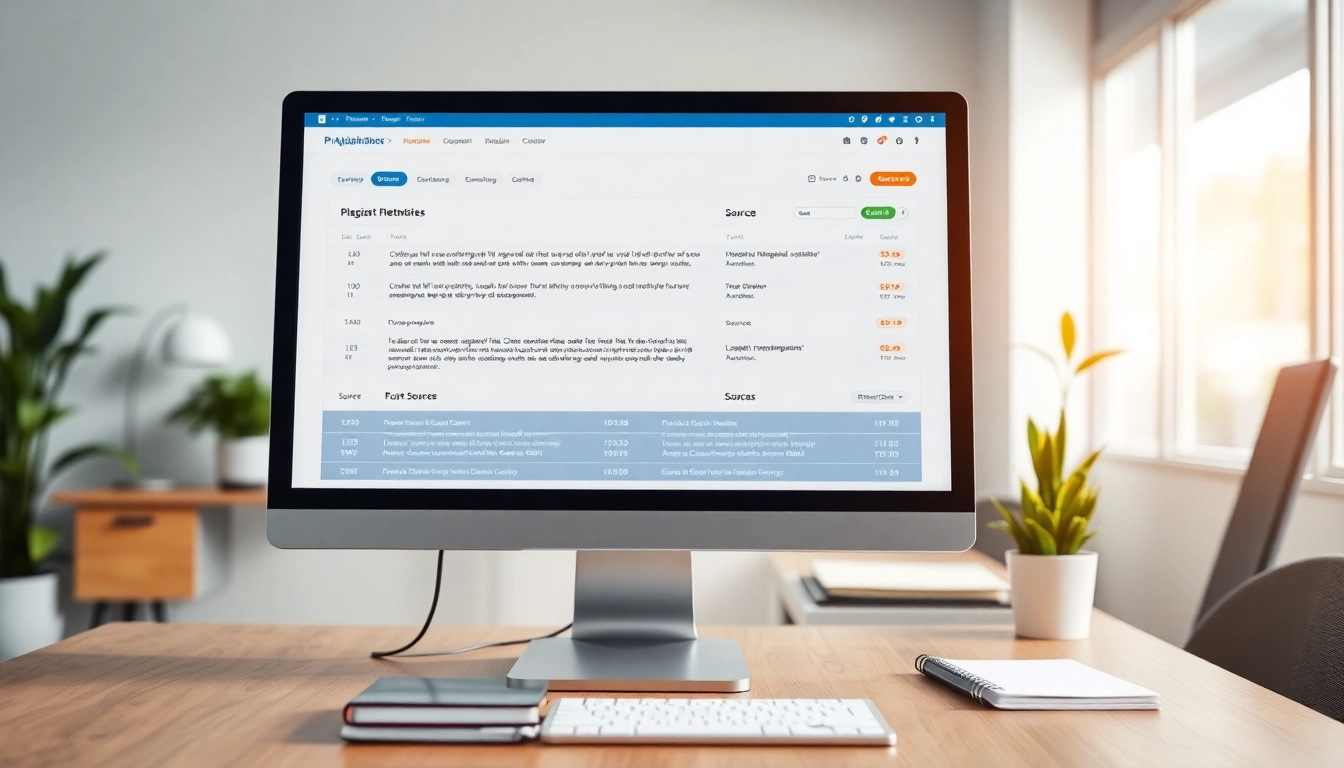The Importance of Using a Plagiarism Checker
In today’s digital age, where content is generated at an astounding pace, ensuring originality has become more critical than ever. A plagiarism checker is an essential tool for students, educators, writers, and professionals alike. It helps maintain the integrity of written work and ensures that ideas are expressed uniquely, thus fostering creativity and genuine intellectual contribution. Understanding its significance can have far-reaching benefits in both academic and professional settings.
Understanding Plagiarism and Its Consequences
Plagiarism occurs when someone uses another person’s words, ideas, or intellectual property without proper attribution. This dishonest practice undermines trust and devalues the hard work of original creators. The consequences of plagiarism are severe and can range from academic penalties—such as failing grades, expulsion from educational institutions, or loss of reputation—to legal repercussions and damage to professional standing in the workplace.
For students, committing plagiarism can lead to disciplinary action, making it imperative to understand how to attribute sources correctly. For professionals, especially writers, plagiarism can result in loss of credibility, financial penalties, and legal battles, emphasizing the importance of using tools designed to detect and prevent such occurrences.
How Plagiarism Checkers Support Academic Integrity
Plagiarism checkers contribute significantly to upholding academic integrity by identifying instances of unintentional plagiarism. Many students may not realize that paraphrasing without proper citation can still be considered plagiarism. By using these tools, students can ensure their work complies with academic standards while also learning how to incorporate and cite sources effectively. Educational institutions often implement plagiarism checkers as part of their submission processes to further promote originality and fairness among peers.
Benefits of Detecting Plagiarism Early
Identifying plagiarism early in the writing process provides numerous advantages. Writers can address issues before submissions, shielding themselves from potential embarrassment or academic penalties. Early detection allows for revisions and enhances writing skills, leading to stronger and more unique compositions. Additionally, it promotes a culture of originality and respect for intellectual property among students and professionals alike, which benefits the broader creative community.
Features to Look for in a Plagiarism Checker
Not all plagiarism checkers are created equal, and selecting the right one requires awareness of specific features that enhance usability and effectiveness. Here are essential features to consider:
Accuracy and Speed in Detection
When choosing a plagiarism checker, accuracy is paramount. A tool’s ability to detect plagiarism should encompass a wide array of sources, including academic papers, online articles, and current publications. Some checkers utilize comprehensive databases to compare submitted content, ensuring thorough analysis. Additionally, speed is crucial for users who may need to scan entire papers quickly. An ideal checker provides instant results without compromising the quality of detection.
User-Friendly Interface for Easy Navigation
The design of a plagiarism checker significantly impacts the user experience. A user-friendly interface fosters easy navigation, minimizing confusion. Clear instructions, accessible menus, and straightforward report generation enhance usability, making it easier for both tech-savvy individuals and those less comfortable with technology to utilize these tools effectively.
Compatibility with Multiple File Formats
Due to the diverse range of document types in use today, a reliable plagiarism checker should support multiple file formats—such as DOCX, PDF, TXT, and more. This flexibility allows users to check various documents without needing to convert files into a single format, saving time and effort in the writing process.
Top Plagiarism Checkers on the Market
With a myriad of plagiarism checkers available, selecting the right one can be daunting. Here’s a comparative look at some of the leading tools in the market:
Comparing Functionality and Pricing
Many plagiarism checkers operate on a freemium model, giving users access to basic features for free while charging for premium services. Platforms like Grammarly, PapersOwl, and Plagiarism Detector provide reliable tools, each with its pricing structure and functionality. For instance, Grammarly’s plagiarism checker is integrated with grammar checks, enhancing its overall utility for students and professionals. On the other hand, PapersOwl promises a 100% accurate report and supports multiple file formats, appealing to a broader audience.
Reviews and User Experiences
Reviews can provide valuable insights into user experiences, helping potential users make informed decisions. Websites like Trustpilot and G2 aggregate feedback regarding functionality, accuracy, and user support, showcasing both positive and negative experiences. Instilling confidence in potential users, positive reviews highlight the practicality of such tools in different scenarios—ranging from academic writing to professional content creation.
Choosing the Right Tool for Your Needs
While personal preferences play a significant role in choosing a plagiarism checker, identifying specific needs is essential. Writers should consider aspects like volume of content to be checked, required accuracy levels, and budget constraints. For example, a student needing to check essays might opt for a free service, while institutions may require comprehensive checks exceeding the capabilities of standard free tools, prompting the use of premium services.
How to Effectively Use a Plagiarism Checker
Using a plagiarism checker correctly can vastly improve the quality of written work. Here’s a step-by-step approach to utilizing these tools effectively:
Step-by-Step Guide to Checking Your Work
To begin, choose the appropriate plagiarism checker based on the features previously discussed. Next, prepare your document, ensuring it is saved in a compatible format. Upload the document to the checker’s platform, and initiate the scanning process. Once the scan is complete, review the report, which will list any flagged sections with potential plagiarism. This report serves as a crucial roadmap for revision.
Interpreting Results and Making Revisions
Understanding the results generated by a plagiarism checker is vital. Most tools highlight the plagiarized sections and provide links or citations on the matched sources. Writers should carefully read through these results, ensuring proper attributions or paraphrasing of the flagged content. Making necessary revisions can involve citing the sources correctly or rephrasing sentences to enhance originality.
Best Practices for Avoiding Future Issues
A proactive approach to avoiding plagiarism is worth developing beyond using a checker. Writers should familiarize themselves with different citation styles (APA, MLA, Chicago, etc.) and adhere to the conventions as per the required format. Maintaining proper notes—keeping track of ideas and sources—facilitates accurate citations. Establishing a habit of writing with originality in mind can significantly reduce the chances of plagiarism occurrences.
Future Trends in Plagiarism Detection Technology
As technology continues to evolve, so too does plagiarism detection technology. Here are some expected trends shaping the future:
AI and Machine Learning Integration
Advancements in artificial intelligence and machine learning are poised to revolutionize plagiarism detection. Future plagiarism checkers may utilize AI to understand context better, identify paraphrasing, and detect subtler forms of plagiarism. As systems improve, they’ll become smarter in distinguishing between legitimate use of sources and academic dishonesty, offering more precise feedback to users.
Increasing Demand in Educational Institutions
The growing prevalence of online education has resulted in increased demand for plagiarism detection tools in academic settings. Institutions will likely implement stricter measures to uphold academic integrity, progressively adopting advanced plagiarism checkers integrated into submission systems, further promoting originality.
Potential Challenges and Ethical Considerations
Despite benefits, academic and ethical challenges persist in the realm of plagiarism detection. A reliance on technology may overlook nuanced instances of plagiarism, necessitating a comprehensive understanding of original writing versus poor paraphrasing. Furthermore, educational institutions must strike a balance between safeguarding academic integrity and fostering creativity, promoting original thought rather than fear of detection.
Overall, as plagiarism detection technologies advance, awareness and adoption of both ethical writing practices and effective plagiarism checkers will be pivotal in shaping the future landscape of originality in writing.



